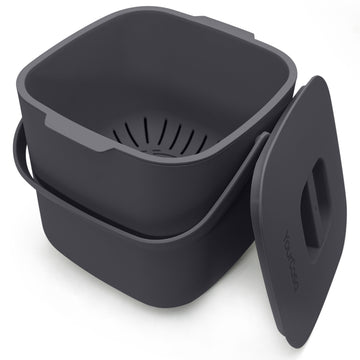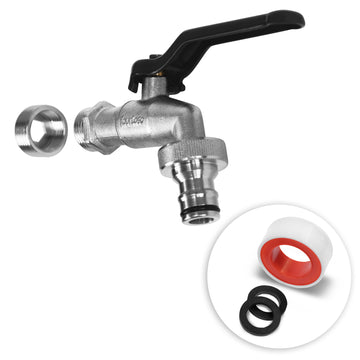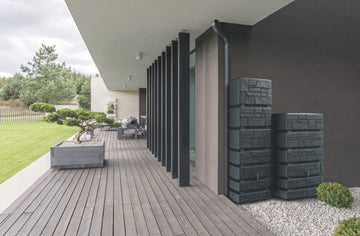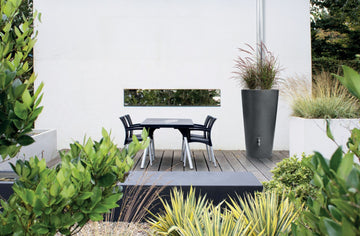Homemade and sustainable: Build your own DIY compost bin
by Robert Zielinski on Jun 07, 2024
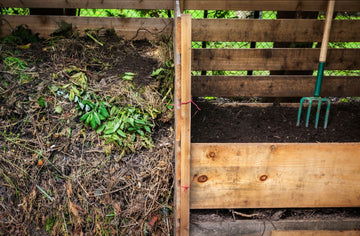
DIY projects are a real life-enhancing activity - they allow you to get creative and work on useful skills you may not have known you had. This is especially true when it comes to something as useful and sustainable as a DIY compost bin . By building your own compost bin, you reduce waste and reuse organic waste.
Having your own compost bin offers many advantages : it allows you to make your own compost, reduces your dependence on industrially produced fertilizers, improves the soil quality of your garden and helps reduce kitchen waste.
How to build a DIY compost bin? To build a DIY compost bin, you will need the following materials: weather-resistant wood, wire mesh, hinges, and screws. Start by constructing a frame out of the wood that is large enough to hold your kitchen and garden waste. Cover the sides of the frame with wire mesh to ensure good ventilation. The lid of the bin should be attached with hinges so that you can open and close it easily. Place the compost bin in a shady, dry place to optimize the composting process.
In this article, you'll learn how to make an effective and aesthetically pleasing compost bin yourself using simple materials and tools . We'll walk you through the necessary steps, show you which materials are best suited, and give you tips on how to optimize the composting process.
Why should I build my own compost bin?
The benefits of building your own compost bin are undeniable. Unlike commercial products, which often have standardized dimensions and functions, building your own allows for a tailor-made solution . You can adjust the size, shape and material of the bin precisely to the available space and the specific requirements of your garden.
Homemade compost bins also play an essential role in protecting the environment . They help reduce the amount of organic waste that ends up in landfills by effectively recycling kitchen scraps and garden waste. This reduces methane emissions produced when organic materials decompose, thus protecting the atmosphere.
In addition, homemade compost bins are often more cost-effective than their commercial counterparts . Materials such as wood scraps, pallets or used containers can often be obtained cheaply or even for free. In comparison, commercial compost bins, especially those made of high-quality materials, can be quite expensive. Of course, there are exceptions such as the compost bins from YourCasa, which are both high-quality and fairly priced.
The benefits of composting in general are numerous and varied. Here are a few examples:
- Reducing kitchen and garden waste: Compost bins help to recycle organic waste, thereby reducing the amount of garbage that ends up in landfills.
- Production of natural fertilizer: Composting creates nutrient-rich soil that can be used as fertilizer in the garden. This eliminates the need for chemical fertilizers, which are often harmful to the environment during production.
- Improving soil quality: Compost improves soil structure, promotes the growth of beneficial microorganisms and increases its water retention capacity.
- Cost-effectiveness: Building your own compost bins can be more cost-effective than buying ready-made products, and using compost reduces the need for expensive fertilizers.
- Environmental protection: Composting garden waste and other garbage reduces emissions of methane gases produced when organic materials decompose in landfills, thus contributing to climate protection.
- Education and awareness: Engaging in composting can promote awareness of sustainable living and lead to a deeper understanding of ecological cycles.
- Adaptability: Homemade compost bins can be individually adapted to your needs and available space.
- Reducing odors and pests: Modern or well-designed composting systems can help minimize odors and reduce the attraction of pests.
What materials do I need for my DIY compost bin?
When building a DIY compost bin , sturdy, weather-resistant materials like untreated wood, wire mesh, and stainless steel screws are best. Wood is durable and natural, making it ideal for outdoor use, while the wire mesh ensures good ventilation and keeps pests away. When purchasing these materials, you can be sustainable and inexpensive by using recycled materials or using leftovers from construction projects, which are often cheaper or even free.
To assemble it, you will need basic tools such as a saw, a screwdriver or a drill and pliers. If you don't have these at home, you don't necessarily have to buy them - just ask around in your neighborhood. With a bit of luck, someone will lend you the necessary equipment.
How do I find the right location for my compost bin?
How efficiently the composting process takes place in your container depends not only on the composition of the materials, but also on the location. The ventilation and humidity inside depend largely on the positioning of the container.
A shady to partially shady spot is ideal, as direct sunlight can dry out the compost, which slows down the decomposition process. Avoid places that are too wet or too dry to ensure balanced moisture in the compost.
Also remember that you should keep adding new material to the composter. Therefore, place it in an easily accessible place - ideally near the kitchen so that you can throw kitchen waste into it. A kitchen composter from YourCasa is also practical for this, as you can use it to compost organic waste in the kitchen and put the compost material into your self-built composter when needed.
Match the size of your DIY composter to the size of your garden . A rectangular shape with an east-west orientation will help ensure even sunlight.

How to build a DIY compost bin step by step?
Building your DIY compost bin really isn't that difficult. With basic tools and DIY skills, you can build your own compost bin in no time. Here's a step-by-step guide to building a simple DIY compost bin:
Gather materials: Gather weather-resistant wood, wire mesh, metal brackets, screws and hinges.
- Cutting the wooden parts: Cut the wood for the side walls and the floor. A measurement of 1 × 1 meter per wall is recommended.
- Assembling the side walls: Connect the cut wooden sides to form a box using metal brackets and screws.
- Attaching the wire mesh: Cover the sides of the box with wire mesh to provide ventilation and keep pests out.
- Assemble the lid : Make the lid from another piece of wood and attach it to one of the side walls with hinges.
- Wood protection: Treat all wood with an environmentally friendly wood preservative to make the container weatherproof and durable.
- Setting up the compost bin : Choose a suitable location that is partially shaded and allows good ventilation and easy access.
Tada! In just a few steps you can build your own compost bin for your garden – and from now on you can live a little more environmentally friendly.
What mistakes should I avoid during construction?
Everyone makes mistakes - this also applies to building DIY compost bins. Especially if you don't have much experience with craft projects, it's certainly no shame if you make one or two mistakes. Nevertheless, some of the most common mistakes can be easily avoided.
A typical mistake is the use of non-weatherproof materials that can rot quickly. It is important to use robust and treated materials or to treat the wood with an environmentally friendly wood preservative Another mistake is insufficient ventilation, which leads to poorly decomposing compost. Make sure your container has enough air holes or a wire mesh to ensure good air circulation.
In addition, the compost bin should not be placed directly on the ground without some kind of drainage , as waterlogging will negatively affect the composting process. A simple solution is to raise the bottom of the bin slightly or place a layer of gravel under the compost bin to drain excess water.
How do I maintain and use my compost bin effectively?
Like most things, you should also take care of your compost bin from time to time . First of all, you should of course clean it regularly. This is especially useful when it is empty or does not have much content. Simply cleaning it with water and a brush after each emptying is sufficient. This is an easy way to prevent mold and unpleasant smells.
The compost should also be turned regularly , ideally every few weeks. This improves aeration and encourages even decomposition of the materials. Use a garden fork or shovel to gently turn the contents.
The finished compost can be used in many ways in the garden : as mulch in beds, to improve the soil before planting new plants or as part of a homemade potting soil mix. It is rich in nutrients and improves soil structure and fertility, resulting in healthier plants and richer harvests.

Conclusion:
Building a DIY compost bin and composting in your garden are two things that are really not difficult. With a few basic materials and a little DIY skills, you can start your own gardening project. So what are you waiting for? Go ahead, build your bin and do something good for your garden and the environment.
By the way: Check out YourCasa to get inspiration for other great DIY projects and discover great products like the YourCasa trash cans or the EcoFusion .

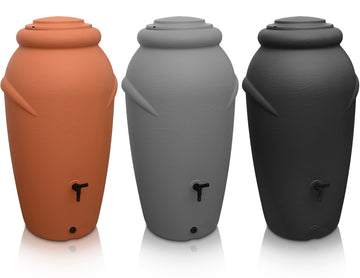
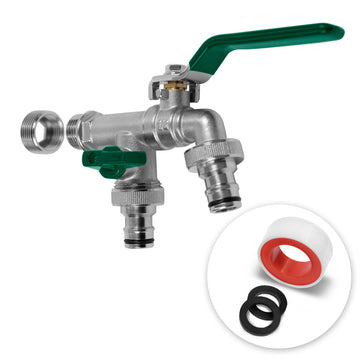
![Drei hohe YourCasa Regentonne 240 Liter [Wellen-Design] - Frostsicher & UV-beständige Gartentöpfe in den Farben Schwarz, Grau und Terrakotta, jeweils mit Drainagesystem für nachhaltige Bewässerung.](http://yourcasa.de/cdn/shop/files/ohnelogo_b8aeecac-557e-4106-a999-e77dcd160209.jpg?v=1707130230&width=360)
